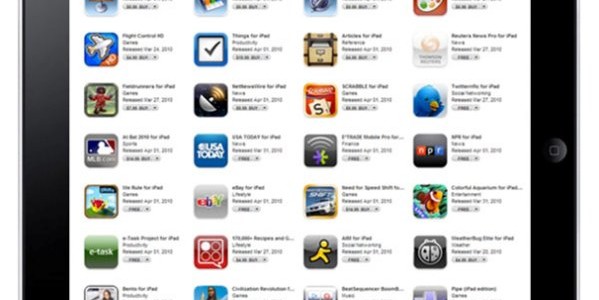Tablets are like their ancestors, the traditional desktop computer – they’re as good for us as we’ll allow them to be. You can use them for everything from chatting with your friends to gambling, browsing the net or firing birds at pigs with slingshots.
In fact, the huge number of applications on the iTunes Store (over 775,000 as of January this year) means that there’s an app for everything. Far from being an evil machine that stops kids from blossoming, the iPad (and tablet computers in general) can bring dull subjects to life through a whole host of third-party applications. Here are five of our favorites.
1 – Phone for Kids
Compatibility: iPhone, iPad
Cost: Free (with in-app purchases)
Available on both the iPhone and the iPad, this free application has been downloaded over six million times and has spent time as the top education app in both the US and the UK. Phone for Kids brings lessons to life through short, educational games, sparking creativity at the same time – the thirty inbuilt games encourage children to sing, draw and play, while teaching them to read, count and to identify shapes and colours, amongst other things. The app will quickly lose its magic for older children, but to a five-year-old, it’s genuinely magical.
2 – Twinkle Twinkle Little Star
Compatibility: iPhone, iPad, iPod Touch
Cost: Free (with in-app purchases)
Also by Kids Games Club, the company behind ‘Phone for Kids’, this application provides eight educational activities for young children, from an interactive sing-along to colouring books, puzzles, and memory games that aim to teach children basic directions and orientation, cognitive skills, the ability to count and even the names of the twelve signs of the Zodiac.
3 – Cbeebies Magazine
Compatibility: iPhone, iPad, iPod Touch
Cost: Free sample, £2.99 per issue
Developed by the BBC in support of their popular children’s television channel, this application is aimed at children between the ages of 3 and 6 who want to have fun while learning. The app features a number of CBeebies characters, including Bob the Builder and Pingu, and uses a subscription model with four issues released per year, costing £2.99 per issue or £9.99 for the year. Each issue includes six zones and over fifty activities, as well as resources for parents to show them how to get the best from the app for their children.
4 – How to Draw
Compatibility: iPhone, iPad, iPod Touch
Cost: Free (with in-app purchases)
One for the miniature Picasso in your life, How to Draw claims to be ‘like a personal art teacher’ and offers up step-by-step instructions on how to draw cartoons, animals and even the faces of celebrities for more advanced users. One of the advantages of this app is that it can help beginners and advanced artists alike, although it has an older target audience than other apps and the developer has a habit of cramming in too many adverts. Once the kids have finished their masterpieces, they can be saved to the phone, e-mailed to friends or published on a Facebook page, if they’re old enough to have an account.
5 – abc PocketPhonics
Compatibility: iPhone, iPad, iPod Touch
Cost: £2.49
abc PocketPhonics uses the iPad’s touchscreen technology to help young children to learn how to read and write, providing letter sounds and an outline for the letters that kids are encouraged to draw over. Now featuring a progress-tracking website that provides a view of kids’ progress across devices, the app can even be used by teachers to track the progress of their pupils. One review of the application reads: “My 2-year-old has learned to write, recognize and sound letters and has fun while learning. Can’t rate this app highly enough.”
Of course, some parents are understandably hesitant to hand their devices over to young children after recent horror stories of kids spending hundreds of pounds on applications, with a survey from Microsoft finding that British kids spend up to £30.9 million a month on unauthorized purchases.
Parents can combat this by taking simple precautionary measures, by following Apple’s instructions to disable in-app purchases. Of course, it’s also a good idea to only allow children to use tablet computers with adult supervision.
iPad applications can be a great way to give your youngster an extra edge in the classroom, and they can be such fun that they won’t even realize that they’re learning. Just be sure to use your discretion and to test any application for bugs, usability and inappropriate content before you set an inquisitive mind loose upon it.
Have you used any applications to help teach your children? If so, how was the experience? Let me know with a comment.
About the author: Dane Cobain is a social media specialist for UK-based creative agency fst the Group. He’s also a gadget-lover and tech fanatic, as well as an internet addict





